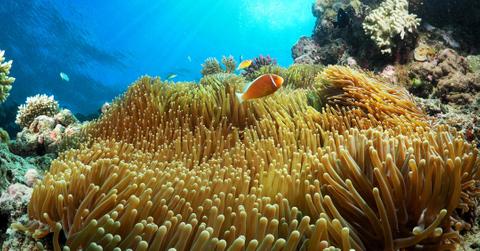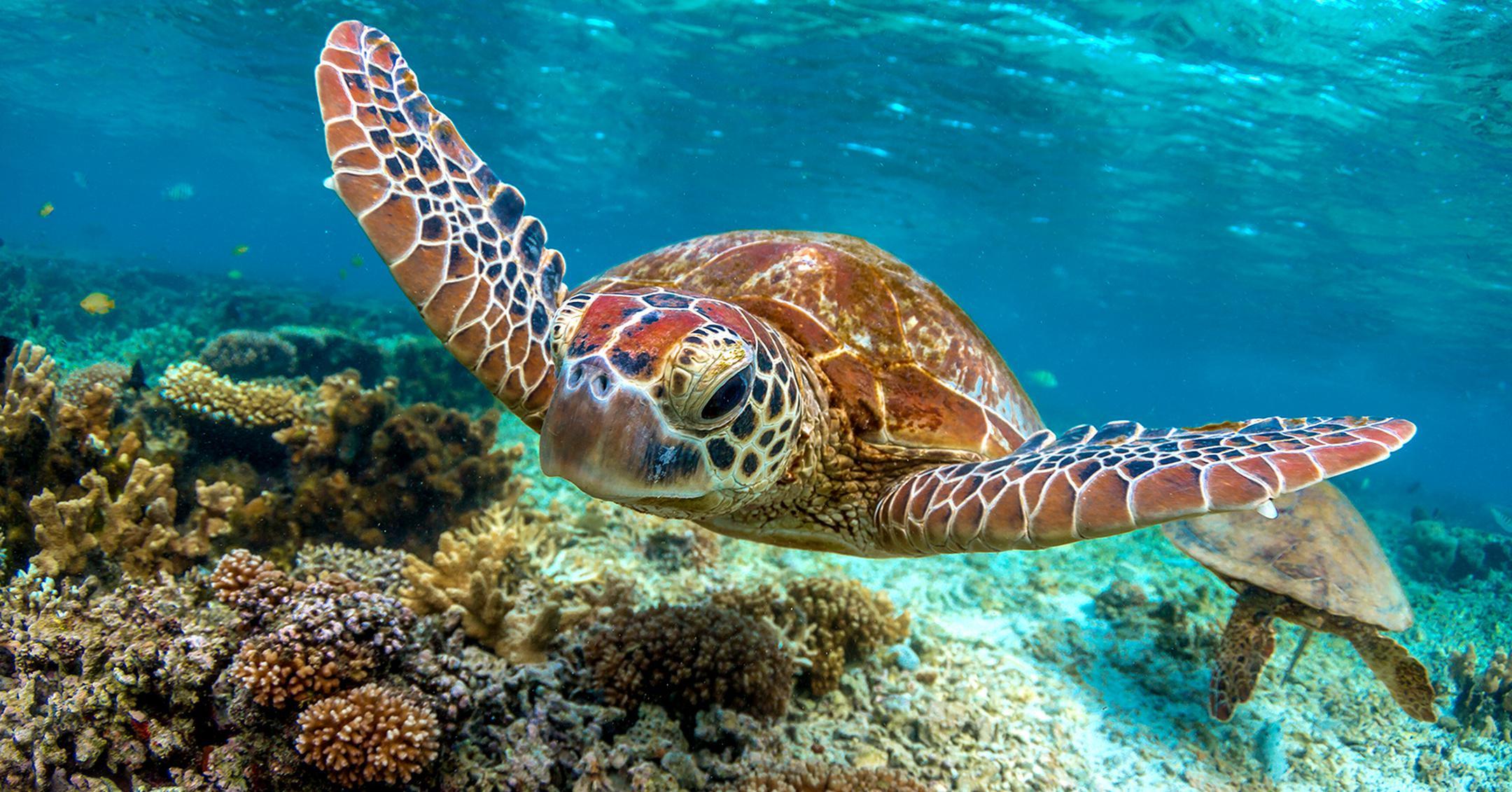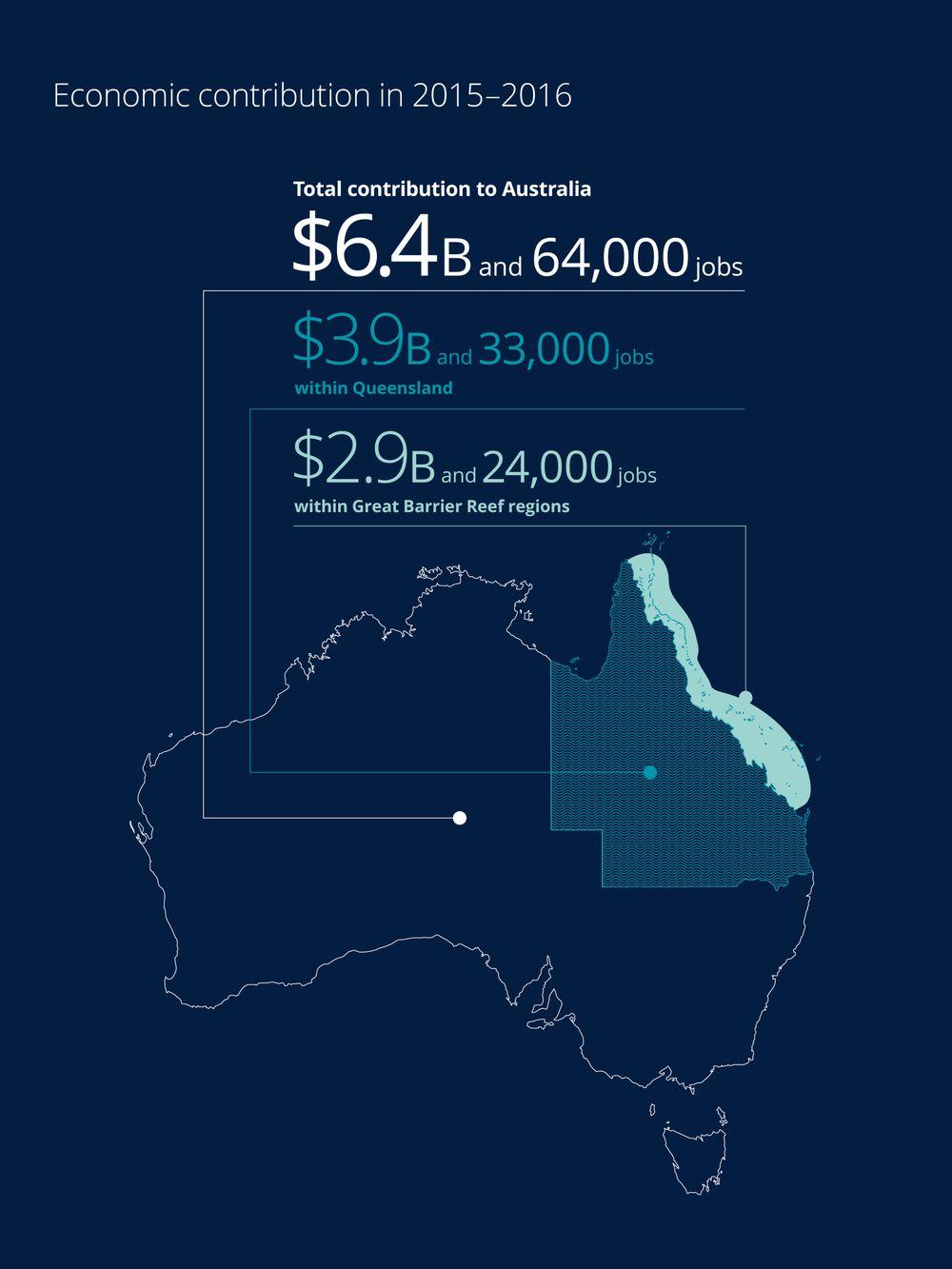Great Barrier Reef Shows Signs Of Recovery After Mass Coral Bleaching In 2016
The largest living structure in the world is showing signs of recovery after mild summer temperatures and cooperation among science and government in supporting the reef’s recovery.
Updated Sept. 14 2018, 10:36 a.m. ET

Only two years ago Australia's Great Barrier Reef experienced a mass coral bleaching event that left the largest living structure in the world forever changed. Scientists discovered the events caused the collapse of the ecosystem for 29 percent of the 3,863 reefs in the giant coral reef system.
Thanks to a milder 2017-2018 summer, Tourism and Events Queensland issued a “positive update” on the reef last week, reporting there are “substantial signs of recovery" in areas that were affected the most.
According to the Queensland State Government, The Reef & Rainforest Research Centre (RRRC), a nonprofit organization, reported the milder summer temperatures and other factors including cooperation among science, and government in supporting the reef’s recovery, have contributed to the reef's health. Lead researcher Roger Beedeen said it was an encouraging sign of the ability of corals to repopulate and regrow after damage.
“What we’re now witnessing in many areas between Cairns and Bowen, where Cyclone Yasi swept through, is good regrowth of surviving corals and large numbers of new coral colonies,’’ the Great Barrier Reef Marine Park Authority scientist said.
Visible from space and greater in size than the United Kingdom, Holland, and Switzerland combined, the reef is home for a variety of animals, including thirty species of whales, dolphins, and porpoises, six of the world’s seven species of threatened sea turtles, at least 30 species of mammals, and more than 1,500 fish species.

Warmer ocean temperatures put stress on coral, leading to coral bleaching, meaning the higher temperatures essentially "cook" the coral, turning the once colorful algae ghostly white. If "cooked" for too long the structures die off, but some coral can survive if it has time to recuperate.
Though the damage to the reef has been extensive, the government announced earlier this year that it would spend about $365 million on reef conservation efforts, making it the largest single investment for reef conservation and management in the country’s history.
Deloitte Access Economics reports the reef to valued at over $56 billion due to the tens of thousands of jobs it provides and how it contributes to Australia's economy.

“Valuing nature in monetary terms can effectively inform policy settings and help industry, government, the scientific community and the wider public understand the contribution of the environment, or in this case the Great Barrier Reef, to the economy and society,’’ the Deloitte report said. “The tight and unforgiving deadline the Great Barrier Reef is up against necessitates an understanding of its true value to know what kind of policy action is required in response.’’
“These experiments show taking action on climate change reduces the loss of coral reefs and has many benefits for the Great Barrier Reef and its dependent people and industries.,’’ the report found. “These types of scientific experiments, in combination with field studies, have built a strong case for action on climate change.’’
Despite the good news by researchers on the reef's progress, RRRC Managing Director Sheriden Morris, says the reef's recovery is “contingent on environmental conditions” and that the reef “may suffer further bleaching events as the climate continues to warm.”
“When a reef is reported as ‘bleached’ in the media, that often leaves out a critical detail on how severe that bleaching is, at what depth the bleaching has occurred and if it’s going to cause permanent damage to the coral at that site,” Morris said in the statement, adding that the Barrier Reef “has significant capacity to recover from health impacts like bleaching events.”